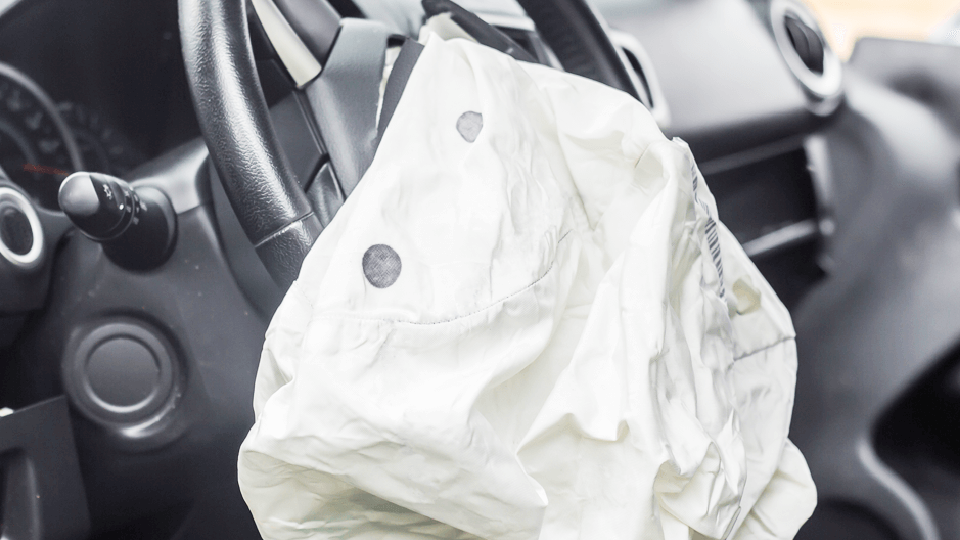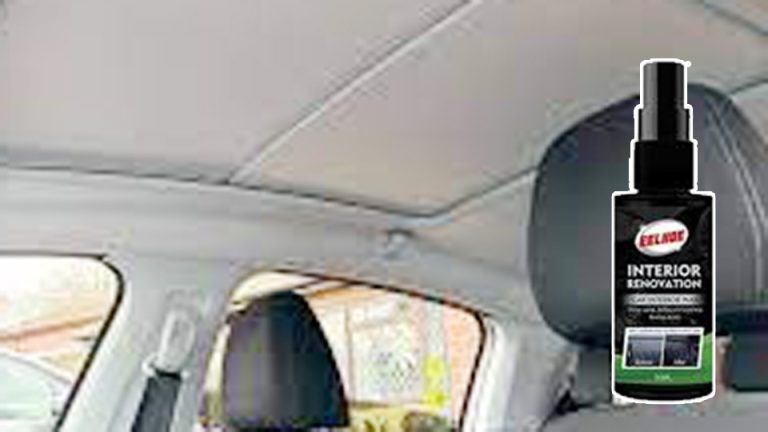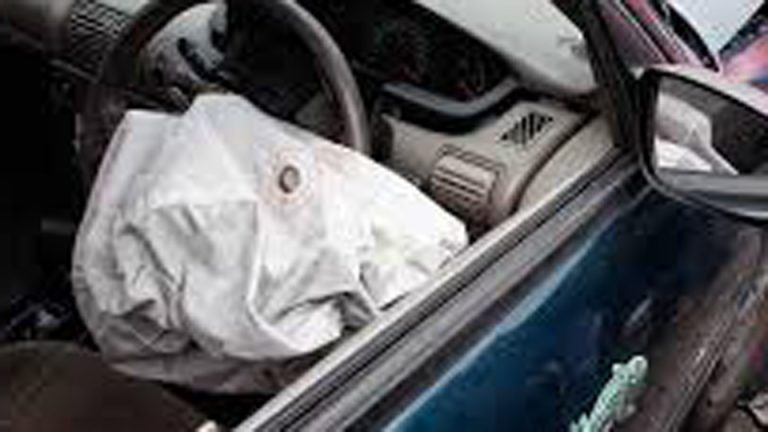Last week, I was vacuuming the interior of my family’s minivan, trying to tackle the crumbs and pet hair my kids and dog leave behind. As I cleaned around the steering wheel, I noticed the airbag cover and started thinking: What would happen if airbags are not used in cars? It’s a scary thought, especially as a parent who wants to keep my family safe. Airbags are a critical safety feature, and their absence could mean serious risks in a crash.
But keeping them in top shape also means maintaining a clean car interior, which is just as important for hygiene and safety. Whether you’re a homeowner, renter, parent, or cleaning enthusiast, this guide is for you. I’ll explore the dangers of not having airbags and share practical, affordable ways to clean your car’s interior to ensure those safety features work when you need them most.
A clean car isn’t just about looks—it’s about creating a healthy, safe environment for your family. Dust, dirt, and grime can affect airbag sensors or make your car less comfortable, while a lack of airbags could lead to severe injuries in an accident. For parents, safety is a top priority, and for renters, keeping a leased car clean avoids costly damage fees. Let’s dive into why airbags matter, what happens without them, and how to keep your car’s interior spotless and safe.

Image by daltoncollision
Why Airbags Are Essential for Car Safety
Airbags are one of the most important safety innovations in modern vehicles. They act as a cushion during a crash, reducing the force of impact on your body. I’ve always felt a little safer knowing my minivan has airbags, especially when driving with my kids. But what happens if they’re not there?
Role of Airbags in a Crash
Airbags deploy in milliseconds during moderate to severe crashes, inflating to protect your head, chest, and upper body from hitting hard surfaces like the steering wheel or dashboard. They work best with seat belts, reducing driver fatalities by 29% and passenger fatalities by 32% in frontal crashes. Without airbags, the risk of serious injury or death skyrockets.
Health and Safety Risks Without Airbags
Without airbags, a crash can lead to severe head, neck, or chest injuries, even at low speeds. For families, this is especially concerning, as children and elderly passengers are more vulnerable. I once saw a fender-bender where the driver, in a car without airbags, suffered a concussion from hitting the steering wheel. Airbags could’ve made a huge difference.
Impact on Families and Renters
Parents rely on airbags to protect kids in car seats or booster seats, while renters need to ensure leased vehicles have functioning safety features to avoid liability. A clean interior also supports airbag performance by keeping sensors free of dust or debris, which I learned after noticing gunk near my car’s dashboard.
What Happens If Airbags Are Not Used in Cars?
Let’s break down the consequences of driving without airbags. It’s a sobering reality, but understanding the risks can motivate us to prioritize safety and maintenance.
Increased Risk of Injury
Without airbags, your body is more likely to collide with the car’s interior during a crash. In a frontal collision at just 10–12 mph, an unbelted driver could hit the steering wheel, causing concussions, broken bones, or internal injuries. Even belted drivers face higher risks without airbags, as seat belts alone can’t fully cushion the impact. I shudder thinking about my kids in a car without this protection.
Higher Fatality Rates
Airbags significantly reduce fatality rates in moderate to severe crashes. Without them, the likelihood of fatal head or chest injuries increases, especially in high-speed collisions. Data shows that airbags save thousands of lives annually, and their absence could mean a tragic outcome in an otherwise survivable accident.
Vulnerable Groups at Greater Risk
Children, short drivers, and elderly passengers are particularly at risk without airbags. Kids in the front seat (not recommended) or short drivers sitting close to the steering wheel face severe injuries from impact. My mom, who’s petite, always adjusts her seat to maintain a safe distance from the airbag, a habit I’ve adopted too.
Legal and Financial Implications
In the U.S., all new cars since 1999 must have driver and passenger airbags. Driving an older car without them isn’t illegal, but you could face higher insurance costs or liability in an accident. For renters, damaging a leased car’s airbags through neglect (like spilling liquids on sensors) could lead to costly repairs.
How to Keep Your Car’s Airbags and Interior Clean
Maintaining a clean car interior not only keeps your vehicle looking great but also ensures airbags and other safety features function properly. Dust or debris on sensors can affect performance, and a dirty interior can harbor bacteria. Here’s how I keep my minivan clean and safe.
Daily Cleaning for a Fresh Interior
A quick daily clean prevents buildup and keeps your car hygienic.
- Step 1: Vacuum crumbs, dirt, and pet hair from seats and floors using a handheld vacuum (like a Black+Decker Dustbuster, about $40 at Walmart).
- Step 2: Wipe the dashboard, steering wheel, and airbag covers with a damp microfiber cloth and a mild all-purpose cleaner (like Simple Green, diluted with water).
- Step 3: Dry with a clean microfiber cloth to prevent water damage to electronics or sensors.
- Step 4: Shake out floor mats and vacuum underneath to remove hidden dirt.
Tip: I keep a small trash bin in my car to collect snack wrappers and avoid messes. It’s a game-changer for busy parents.
Safety Warning: Avoid spraying cleaners directly on airbag covers or sensors, as moisture can interfere with electronics. Always dampen the cloth instead.
Deep Cleaning for Airbag Areas
Every few months, I do a deeper clean to ensure airbag areas are free of grime.
- Step 1: Vacuum around the steering wheel, dashboard, and side panels where airbags are housed to remove dust.
- Step 2: Mix a solution of 1 part water to 1 part white vinegar in a spray bottle. Lightly mist a microfiber cloth and wipe airbag covers gently.
- Step 3: For stubborn stains, use a soft-bristled brush dipped in the solution, but don’t scrub hard.
- Step 4: Dry thoroughly with a clean cloth to prevent moisture buildup.
Tip: I deep-clean my car’s interior before road trips to ensure everything’s spotless and safe for my family.
Safety Warning: Never use harsh chemicals like bleach or ammonia near airbag areas, as they can corrode sensors or weaken materials.
Cleaning Fabric Seats and Carpets
Fabric seats can trap dirt and odors, affecting the overall cleanliness of your car.
- Step 1: Vacuum seats thoroughly to remove loose dirt.
- Step 2: Spray a fabric cleaner (like Bissell Upholstery Cleaner, about $10 at Target) on stains and scrub with a soft brush.
- Step 3: Blot with a damp cloth to remove cleaner, then dry with a microfiber cloth or let air dry with windows open.
- Step 4: Use a fan to speed drying and prevent mold, especially in humid climates.
Tip: I tackled a juice stain on my back seat with this method, and it looked brand new in an hour.
Cleaning Leather or Vinyl Seats
Leather seats are common in cars with airbags, and they need special care.
- Step 1: Vacuum to remove debris.
- Step 2: Wipe with a damp cloth and a leather cleaner (like Meguiar’s Gold Class, about $12 at AutoZone).
- Step 3: Apply a leather conditioner to prevent cracking.
- Step 4: Buff with a dry microfiber cloth for a polished look.
Tip: I condition my leather seats every 6 months to keep them soft and durable.
Tools and Products for Car Interior Cleaning
Here’s a list of affordable tools and products I use, available at stores like Walmart or Amazon.
| Tool/Product | Use | Where to Find |
|---|---|---|
| Handheld Vacuum | Removes crumbs and dirt | Walmart, Target |
| Microfiber Cloths | Wiping and drying surfaces | Costco, Amazon |
| Simple Green (Diluted) | Safe for dashboards and airbag covers | Home Depot, Grocery stores |
| White Vinegar | Natural disinfectant | Grocery stores |
| Fabric Cleaner | Cleaning fabric seats | Target, AutoZone |
| Leather Cleaner/Conditioner | Maintaining leather seats | AutoZone, Walmart |
Safety Note: Always test cleaners on a small, hidden area to ensure they won’t damage surfaces or affect airbag components.
Real-Life Cleaning Scenarios
Every household has unique needs. Here’s how to apply these cleaning tips in common situations:
Busy Family Car: With kids dropping snacks, vacuum daily and deep-clean seats monthly. Use a trash bin to keep messes contained.
Rental Car: Stick to gentle cleaners like soap and water to avoid damaging leased vehicles. Check airbag areas for dust buildup to maintain safety features.
Pet Owners: Pet hair and dander require frequent vacuuming and fabric cleaning. I vacuum my dog’s favorite seat weekly to keep it fresh.
Road Trip Enthusiast: Deep-clean before long trips to ensure a hygienic, comfortable ride. Focus on airbag areas to keep sensors clear.
Dos and Don’ts for Car Interior Cleaning
| Do | Don’t |
|---|---|
| Use damp cloths for airbag areas | Spray cleaners directly on sensors or covers |
| Vacuum regularly to prevent dust buildup | Use bleach or ammonia-based cleaners |
| Dry surfaces thoroughly | Let water sit on electronics or fabric |
| Test cleaners on hidden areas | Ignore stains or spills, as they can set |
Preventing Airbag Issues and Maintaining Safety
Keeping airbags functional goes hand-in-hand with a clean car interior. Here are habits I’ve adopted:
Check Airbag Lights: If the airbag warning light on your dashboard stays on, have it inspected by a professional. I had mine checked after it flickered, and it was just a loose sensor.
Keep Sensors Clear: Dust or debris on dashboard sensors can affect airbag deployment. Wipe them gently during cleaning.
Follow Safety Guidelines: Keep 10 inches between the driver and steering wheel, and place kids under 13 in the back seat, away from frontal airbags.
Replace Used Airbags: Airbags deploy once and must be replaced at an authorized repair center, costing $500–$2,000. I budget for this after any crash.
When to Call a Professional
If you notice persistent dirt, damaged airbag covers, or warning lights, consult a professional. They can:
- Inspect and repair airbag systems.
- Deep-clean interiors with specialized equipment.
- Address mold or odors from spills.
For renters, check with your leasing company before major cleaning or repairs to avoid violating terms.
Motivational Conclusion
Understanding what would happen if airbags are not used in cars highlights just how vital they are to your safety. Without them, the risks of injury or worse in a crash are far higher, making it essential to keep them in working order. Pairing this with a clean car interior ensures your airbags function properly and your vehicle stays hygienic and comfortable.
I love the peace of mind that comes from a spotless minivan, knowing my family is safe and our car is ready for any journey. Start with simple steps like vacuuming and wiping down surfaces, and you’ll create a safer, cleaner ride. You’ve got this—your car and family deserve it!
Frequently Asked Questions
Can Dust or Dirt Affect Airbag Performance?
Yes, dust on sensors or airbag covers can interfere with deployment. Vacuum and wipe these areas gently with a damp cloth during regular cleaning.
How Often Should I Clean My Car’s Interior?
Vacuum weekly for dust and crumbs, wipe surfaces daily, and deep-clean every 3–6 months, depending on use, to keep airbag areas clear and the interior hygienic.
Is It Safe to Use Household Cleaners on Airbag Covers?
Use mild cleaners like diluted dish soap or vinegar. Avoid harsh chemicals like bleach or ammonia, which can damage sensors or materials.
What Should I Do If My Airbag Warning Light Is On?
Have it inspected by a professional mechanic immediately, as it could indicate a faulty sensor or airbag system that won’t deploy in a crash.
Can I Clean Airbag Areas with Water?
Use a damp cloth with water or a mild cleaner, but never soak or spray directly, as excess moisture can damage electronics. Dry thoroughly.




